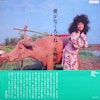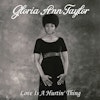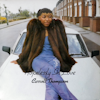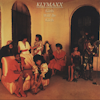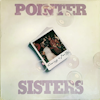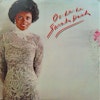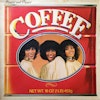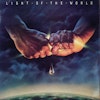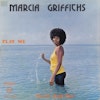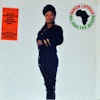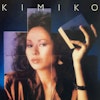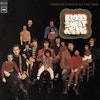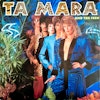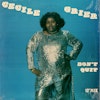

We were in that studio ten hours a day, every day, for nearly two weeks straight. “That’s some big ol’ bullshit,” Poppa Willie would laugh in his trademark tenor, stealing a sip from his ever-present glass of Grey Goose vodka before chiding whichever problems came his way from the studio musicians, Ike himself, or the neighborhood derelicts who often stumbled in looking for handouts. He’s been calling the shots from behind that desk for nearly four decades now, producing countless hits on Hi for artists like O. V. Wright, Bobby Blue Bland, Otis Clay, Ann Peebles, Syl Johnson, and, of course, the indomitable Al Green.
It’s incredible that such lushly orchestrated, sophisticated-sounding songs have come out of this funky-looking gutbucket of a building on South Lauderdale Street, which, like Stax (just around the corner on McLemore Avenue), is a converted movie theater. A brick façade topped by some weather-beaten shingles, the ambiance outside is less than promising. The faded white sign that’s nailed to the front wall boasts “Studio of the World,” but most people who wander by have little clue as to what miracles are taking place within.
Over the last few years, Poppa Willie has buried his wife, Ann, and his brother, saxophonist James; more recently, his own diabetes has caused numerous health problems. Although he has difficulty walking on some days, he still looks as dapper as ever when his son Archie drives him to work. Once in the studio, Pops, now seventy-six years old, is relentless—in fact, he just produced Al Green’s first secular album in twenty-five years, 2003’s critically acclaimed I Can’t Stop.
As proven by his vast oeuvre as a musician, arranger, and producer, Poppa Willie is more of a doer than a talker. When I called him to set up this interview, he responded typically, by cutting straight to the chase: “Yeah, baby, what do you want? An interview? Well, stop and ask, then!”
Willie Mitchell
ANDRIA: Let’s start with your childhood.
WILLIE MITCHELL: I was born in Ashland, Mississippi, on March 1, 1928. That’s in northeast Mississippi. When I was four, my family moved up to Memphis. We lived in Orange Mound [originally part of the Deaderick Plantation, Orange Mound was the first exclusively African-American suburb in the South]. I don’t remember much from back then…except for playing horn, which I started when I was eight years old. My cousin came down to Memphis from Detroit playing a trumpet, and I said, “Well, I’m gonna get me one.” By the time I got to Melrose High School, I was already playing with cats like Tuff Green. I also played in Al Jackson’s band back then—not drummer Al Jackson, Jr., you understand, but his daddy, Al Sr. He had a big band back then.
Who were your influences when you started out?
Roy Eldridge and Harry James on the trumpet, but, locally, Onzie Horn was it, man! He was a motherfucker of a piano player! In high school, he had a band called the Douglass Swingsters. They were bad! Then when Onzie got out of school, we got tight. I lived with him for about three years, but he got so busy he had to put my ass out! He managed to teach me a lot. I could already read music, but he showed me some stuff on the piano, some of that be-bop, and showed me how to arrange songs. He also taught me how to live—how to go from one thing to another!
How did you end up at Hi? Were [studio engineers and label co-owners] Bill Cantrell and Ray Harris responsible for that?
Ray Harris and who? [laughs] Man, Bill Cantrell didn’t put me in there—it was [Hi president] Joe Cuoghi who put me in there! I had an instrumental band at Danny’s Club over in West Memphis back then, and I had my piano player [Joe Hall] doing “Smokie Pt. 1” and “Pt. 2,” which was originally cut by Bill Black [Elvis Presley’s first bassist, who, in the ’60s, led a popular instrumental group called Bill Black’s Combo], you know. So that’s what started this shit. They really brought me in to arrange for Bill Black. Then he got real sick with a brain tumor, but I still got lots of good music out of him before he died.
Before I went to Hi, I’d been in all the studios in Memphis—Sun and all those little places. I used to transcribe music for Sam [Phillips], and I played trumpet on some B. B. King sides with Onzie. I also worked with Reuben Cherry’s label [Home of the Blues], recording groups like the 5 Royales and Roy Brown.
So Hi—a label initially known for “hit instrumentals” and rockabilly—brought you in to up the soul ante and compete with Stax?
I don’t know about any of that shit! All I know is I started running the sessions in the early ’60s, working with O. V. Wright and Bobby Blue Bland. They were signed to Don Robey’s label then—Duke Records. I was also doing my own stuff then, the instrumentals like “Sunrise Serenade” and “20-75,” stuff like that.
They were doing their own thing at Stax. Carla Thomas did come over to cut her first single, but that’s just because [Stax head] Jim Stewart didn’t have his studio up. He came over and used my place because we were already going.
Bill Cantrell had installed some amazing equipment at Royal—that primitive Pultec equalizer and the Teletronics LA-2A Limiter, plus a homemade mixing board and a 3-track.
Man, that shit was all messed up! I brought the real equipment in there! I brought in an Ampex 8-track in the ’60s [which was actually two 4-tracks strapped together with a custom head; its tube-based technology was largely responsible for that warm Hi sound], then, in the early ’70s, I bought a 24-track MCI console and a 16-track tape machine. I upgraded again in 1988, when I bought a new 32-track MCI console and a 24-track machine.
You ran Al Green’s voice though that Pultec equalizer, right?
Yeah! You know, Michael Jackson tried to buy that equalizer from me in the ’80s. I told him no way—it wasn’t for sale!
That sound at Royal is unmistakable! You really close-mic your stuff—what kind of microphones do you use?
The [RCA] DX-77 ribbon mic—it’s one of the sweetest mics that ever lived! That’s what I use on Al. It gives a real good bottom, captures all the mid-ranges, and gets the high tones too. I keep one of those mics reserved for Al—nobody else can use it.
I’ve worked really hard on getting the sound in the studio right. When I first came in, I listened and listened to that room. The sound was running all over the place—I wanted to make it stop somewhere. I wanted the air to be dead, and I put up shit every night until I got it right! I swear I can’t tell you what I used…although I will tell you that it was mainly burlap and house insulation. Man, that stuff stuck to me for six months! It was all over my arms!
What’s a typical session like?
I arrange everything. We get the rhythm section in first, then we put the horns in, then we record the voices and put it all together. It can be easy, or it can be difficult, but that’s how we do it.
Tell me about meeting Al.
We met at a gig in Midland, Texas, in 1966. I knew even then that Al had the talent to really be something. But he didn’t have a follow-up to “Back Up Train,” and he was down on his luck, really starving. I offered to bring him back to Memphis and work with him, but he wanted to know how long it would take to make him a star. I told him eighteen months, and you know what he said? “I really can’t wait that long!” He came around, but first he needed some money—he had some bills to pay up in Michigan. I lent him $1,500 without a contract, and he took it and disappeared up north. About six months later, the doorbell rang at six o’clock in the morning. I thought it was a man coming to paint my kitchen, but the guy said, “Don’t you remember me? I’m Al Green!”
You made him into a star, and he solidified your career as a hitmaker. Where do you think you two would be if you hadn’t met that night?
I don’t know—all I know is that I met him, and he’s the luckiest motherfucker who ever lived!
How did you feel in the mid-’70s, when Al turned his back on secular music?
Al tried to discuss that with me once. I said, “Hey man, if you want to cut gospel music, go cut it with someone else. I ain’t gonna cut no gospel music.” You know, I don’t care whether he’s religious or not—I just don’t wanna cut gospel music. I told him to come back to me when he wanted to do the real stuff. And, of course, eventually he did.
And how did you hook up with the Hodges brothers, who became the Hi Rhythm Section?
I found Leroy [Hodges] out in Germantown [a Memphis suburb]. He had a group called the Germantown Blue Dots. He played bass for them, and I started using him in my band and in the studio. I finally put his brother Charles in the band too, on organ. Al Jackson, Jr. was our drummer, but when his other band, Booker T. and the MGs, hit with that damned thing—“Green Onions”—they were doing a lot of dates, so he found Howard Grimes and put him with me as a replacement. Around the same time, I stopped at a service station to get some gas, and that’s where I found Teenie [Leroy and Charles’s younger brother]. He was sitting there picking his guitar with no shoes on. He was just a kid, so I brought him home with me. He stayed at my house for six years!
They’re an unbeatable team, known for really staying in the pocket. What makes them so special?
They listen to what you say and do what you tell ’em to do! That’s what makes ’em special!
Didn’t the Beatles use Royal as a rehearsal space?
Shit, that was way back in the early ’60s. They wanted to practice, and they knew about the studio because they were carrying Bill Black out on tour. Man, we had a big party that day! They went around the corner to Brady and Lil’s restaurant and bought up all the barbeque. Those guys were crazy—they had these guns that they shot off the top of the building! I’m telling you, it was some wild shit!
I’m sure you’ve seen all kinds of stuff go down at the studio.
Oh, no, you don’t want to get me into that! Noooo… Let’s skip that!
On a more serious note, didn’t Martin Luther King, Jr. come by?
He came by the studio once to congratulate me on “Soul Serenade,” which was a big record back in its day.
I was here when he got killed a few years later. The next day I had to go to Dallas for a gig, but there were riots all over town. The National Guard came in, but folks were burning up shit all over downtown! I wanted to make my gig, so I left some neighborhood winos to take care of the place. I just picked ’em up on the street, bought ’em a case of wine, and locked ’em in the studio!
Man, I was scared when I drove back across the Mississippi River after my gig—I’d heard on the news that they were burning down buildings all over Memphis. I turned on Lauderdale, and I could see the front of the building. Then I saw that the door was still locked. I went in, and everything was miraculously still here. All of the winos had passed out, except for one who was sitting in a chair making sure nothing bad happened. I gave those drunks some more wine and let ’em go home again!
And Keith Richards?
He cut Talk Is Cheap here [in 1987], in a studio I had upstairs at Royal from ’75 till the end of the ’80s. He tried to get my sound—I don’t blame him! That studio was state of the art back then—Rod Stewart was one of the first people to cut in it, and we did one of Al’s records [He Is the Light] up there too.
Which project was your favorite?
Man, I ain’t got no favorite projects. Noooo—once they’re over with, they’re over with! I do like Al’s new record. What’s it called? I Can’t Stop. Do you like it?
Hell yeah I do! My favorite track is “Rainin’ in My Heart.”
Goddamn, we did it! We did it again! We’re already working on a follow-up.
Let’s go back to the history of Hi. Didn’t Jerry Wexler offer you a position at Atlantic Records?
Yeah, he did. When Joe Cuoghi heard about it, he made me vice-president at Hi. Right after that happened, Cuoghi died of a heart attack, right in the airport parking lot. All that happened in 1970.
Well, you had a phenomenal run of hit records in the ’70s, until Al left.
Hi was sold after that [in 1978], but I held onto the studio. Thank God for that!
And now your sons, Archie and Boo, help you run things?
They’re really involved with rap and all that new shit. I’ve been trying to teach them how to engineer soul music, but they’ve got the board all fucked up! [laughs] Now I gotta go down and straighten it out. They’re thinking about girls too much, and that ain’t gonna get it!


Hi Rhythm Section Interviews
HI RHYTHM SECTION INTERVIEWS:
Guitarist Mabon "Teenie" Hodges
GUITARIST MABON "TEENIE" HODGES
ANDRIA: Tell me about meeting Poppa Willie. He said he found you at a gas station!
MABON “TEENIE” HODGES: I was just about fourteen when I met Pops. It wasn’t at no gas station, though—I met him at his house. I have to back up a little for this story—I had started playing with my father in a group called the Germantown Blue Dots. My oldest brother, Leroy, and his best friend Tommy Lee had started a high school group called the Impalas with Archie Turner, Willie’s stepson. Now my father played blues, but the Impalas played R&B. I wanted to play R&B, so I started going to the Impalas’s practices, which were held at Willie’s house. One thing led to another, and Willie started teaching me about music. When I was eighteen, I moved in with him. I stayed until I got married, which was really only about a year and a half!
What is it about Pops that makes him so special?
I can’t put my finger on it… He just knows what he’s doing! He knows how to put the whole thing together, and he keeps it simple and straight to the point. He doesn’t let anyone play too much! [laughs] Living with Pops, I learned how to make music. I learned how to put it together. See, David Porter and Isaac Hayes taught me to write, but Willie taught me how to arrange.
You did some sessions at Stax, right? The Stax sound is so earthy, while Poppa Willie is known for really sophisticated, smooth sounding recordings. What’s different about the set-up at Royal?
I cut a lot of stuff at Stax—my first session over there was for a song I wrote called “I Take What I Want,” which Sam & Dave recorded. Both Stax and Royal were in former movie theaters, and neither studio tried to modernize the buildings [for example, they both still had sloped concrete floors]. Royal has fiberglass insulation in the top of the ceiling, but Stax didn’t have that. Maybe that’s the difference!
Also, at Stax they had different groups—not just one—doing the recording, but at Hi it was just us. There were a lot of cliques at Stax.
So the scene at Stax was more competitive?
We didn’t look at it like competition—we were just cutting records! But I naturally wanted to be the best at what I did.
And how was it working with Pops on the latest Al record?
It was great, except my song didn’t make it on the album. I thought it was a great song—maybe it’ll make it on the next one! We’re scheduled to start recording it pretty soon.


Drummer Howard Grimes
DRUMMER HOWARD GRIMES
Andria: You grew up in the New Chicago neighborhood in North Memphis, right? How did you end up on the south side of town?
Well, when I was twelve years old, I was already playing drums in a band led by a keyboard player named Bob Talley. He had me on drums, Wilbert Steinberg on stand-up bass, Marvell Thomas playing piano, Alfred Rudd on alto sax, Booker T. Jones on baritone, and Boonie Fite on tenor. We played at the Hi Hat Club on Third Street five nights a week. Booker T. and Marvell and I were the only youngsters in there—the rest of the guys were grown.
Bob set up my first session, which was the first session at Stax, in the old Capitol Theater on McLemore Avenue. Stax was still called Satellite back then. Bob set me up with Rufus Thomas—I cut “ ’Cause I Love You” with Rufus and Carla. I didn’t have no idea what a recording studio was when I went in. The outside of the building still looked like a movie theater! When I got inside, I met Miz Axton [Estelle Axton, co-owner of Stax along with her brother Jim Stewart]. She was a wonderful lady—it’s like she took to me the moment I walked in. She saw something in me I couldn’t even see!
When I saw what was happening at Stax, I got excited, but I was a little nervous—all I’d done was play live on stage, and I had no idea how a recording session worked. Chips Moman, who was the engineer at that time, coached me. I just followed his instructions and played like I did live. That was the first record that was recorded in that building! When it came out on the radio, I was really excited! I remember seeing a piece of white cardboard on the door at Satellite—someone had drawn a record on it with some steam coming out of it. They wrote “hot” on it! I guess that was advertising and promotion back then!
You were just twelve years old? Back up, and tell me how young you were when you learned how to play the drums.
Well, when I was six years old [in 1947], I saw Gene Krupa on television in an old black-and-white movie. He was the first drummer I ever saw. I was fascinated—I didn’t think anybody could do that! It just stuck in my mind, you know. Then one night, my cousin Annetta Jean Finley and some friend-girls of hers went to this club on Thomas Street called Curry’s Tropicana for Blue Monday night. I was way too young to be in a club, but she offered to take me. I thought a nightclub was like a café [juke joint]—in my neighborhood, I’d seen people get cut up. I didn’t want to be in that kind of environment! But she said you’d like this. So Mr. Curry allowed me to come in and sit up by the bandstand. The Largoes, Ben Branch’s group, were playing. Their drummer was Ed Smith. That was the first time I’d been close enough to a drummer to see what goes on. I was watching his feet and hands. I was fascinated when I saw that live! I was enthused! I knew that’s what I wanted to do!
After that, I ran into this guy Murray, who used to go with another one of my cousins. He was a cab driver. Well, one day I saw Murray with a pair of drumsticks in his back pocket. He said he drove cabs during the day, and played drums at Club Handy at night. He placed those sticks in my hands for me and showed me how to hold ’em. He showed me one beat, and said, “I want you to learn this, and build your wrists up and play as fast as you can.” He gave me a pattern called the Mama Daddy Roll, which was L-R-L-R-LL-RR-LL-RR. That’s what he left me with. He said, “Next time I come over, I want you to play this for me.” I worked on it every day on the bed in my granddaddy’s room. He’d go to the Masonic Hall on Beale Street every day for lunch, and I’d come beat on his bed. So the next time I saw Murray, I showed him. He was pleased, and after a few weeks he placed my feet on the bass drum. His legs were longer than mine, so I had to stand up. I couldn’t play my left foot, just my right. I wasn’t but six years old then. God moved in my body, and a miracle happened.
What happened next?
I went to Manassas High School, where I was under the teaching of the great bandleader Emerson Able. I never knew that he was in my corner, but he was. He’d take me on his own gigs at the Plantation Inn in West Memphis, and let me out of school at 2 p.m. so I could catch the bus over to McLemore Avenue. [laughs] But he’d never tell you how good you were—he’d keep you working as hard as you could to please him!
I graduated in ’62, and stayed at the Plantation Inn with Emerson, Isaac Hayes, and Floyd Newman. A few years later, I got with a White group called Flash and the Board of Directors, who played at the Thunderbird Club. They offered me a job—ironically, Teenie was down there that same night, and he offered me a job with Willie Mitchell’s band. He told me that Willie had gone through five drummers, but he wasn’t satisfied with any of them. Well, I’d never been out on the road, and I thought I could make it with this White group. Teenie said all right, but he added, “When you come back, the job will be open for you.”
I went out with Flash and Paul Revere and the Raiders [in 1968], and it was all right until I ran into a little trouble in Montgomery, Alabama. Now, I’m not a racist, and I didn’t realize what racism was—I’d been playing in White clubs all my life! But in Montgomery, this man called me a nigger. He told Paul Revere, “This nigger ain’t gonna play in here! We ain’t never had a nigger in this building! James Brown ain’t never been in here!” Paul got upset about it, and he said, “Without Howard, we ain’t going on. Howard is our band.” I’m thinking, wow, maybe I’m out here at the wrong time. I started thinking about the job Teenie had offered me with Willie. Well, I went into that club, and I saw a beautiful set of drums with the American flag painted on ’em, way up high on a riser. I decided to play—but they threw popcorn sacks at me and poured Cokes on me during the first song. I went on to Florida, and then I decided to quit. I called Teenie up, and the job with Pops was still open. I flew home to Memphis, and came over to Hi for a rehearsal a few days later.
The way Poppa Willie remembers it, Al Jackson, Jr. brought you into Hi.
See, I was the first Black drummer at Stax, way before Al Jackson was there, when the only band at Stax was a White group called the Mar-Keys. When Booker T. had the opportunity to cut “Green Onions” [in 1962], they couldn’t find me. That’s how Al Jackson came in—Steve Cropper recommended him. Then, in ’68, Al was so busy at Stax that we switched—he stayed there, and I went to Willie’s band.
He rubbed into me the way to feel, the way to love, the way to groove!Howard Grimes


What did you learn from Pops?
When I started at Hi, I wasn’t really settled. I rushed a lot. Willie liked my style, so he took control of me and started settling me down. I have a lot of respect for him—he taught me what timing was, and molded me into his style of drummer. I was comfortable with it—that’s when I started projecting and concentrating. He rubbed into me the way to feel, the way to love, the way to groove!
What were his teaching methods?
Well, I love women, so Pops said, “Howard, when you play your drums, think about your woman. Think about the tenderness you have when you touch her. Make love to your drums the way you make love to your woman.” Pops said, “Think about when you take those titties when you’re in the bed—play the goddamned drums that way!” It sounded crazy to me, but it started soaking in. He was counting the time and I was thinking about my woman, and I said, “Oh, is that what it’s about?” It tripped me out! But once I caught the hang of it, I took command of the feeling and I knew exactly where he was musically.
I got deeper into it and the drums were getting stronger. I learned that music isn’t to be banged away and beaten at—it’s all soul. It’s in the body. It’s a healing process. It’s into different moods, and it’s the way people walk and talk. I always thank God that Willie taught me that! And the rest is history…he put me in charge of the timing on every session!
I heard that Poppa Willie gave you a nickname…
Yeah—he said, “You ain’t Howard no more—you’re the Bulldog!” The way Pops explained it, a bulldog is something that walk around the house like a nigger. When a nigger gets mad, he walks all over everything and just knocks it down. When a bulldog gets mad, he grabs something and clamps down. Pops said, “When you play the drums you lock down into the tracks just like that!”
You and the Hodges brothers get locked down into the tracks!
Man, let me tell you something: I was a very lonely young man when I was playing drums. When I met Teenie, I saw how he and Leroy and Charles were so close. The friendship and love they had—I wanted that kind of love from my brothers, but I never got it. The Hodges gave me that—we bonded, and it’s still there. A lot of people think we’re all four brothers, and I’ve had more fun and joy with them than I’ve had with my own family. I’ve always given credit to those guys because it was magical when I hooked up with them.
I want the world to know how important the Hodges brothers are to me! Teenie, Leroy, Charles, Archie Turner, Pops, Emerson Able, Floyd Newman, Bob Talley, and Andrew Love, who coached me through Bowlegs Miller’s band—these musicians took me under their wing and carried me through Memphis, Tennessee. I’ve never let any of ’em go—that’s why I’m still standing. That’s the real history of the Memphis sound!




















